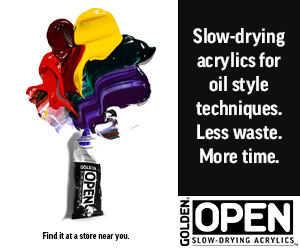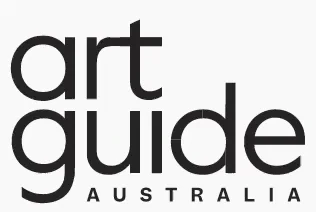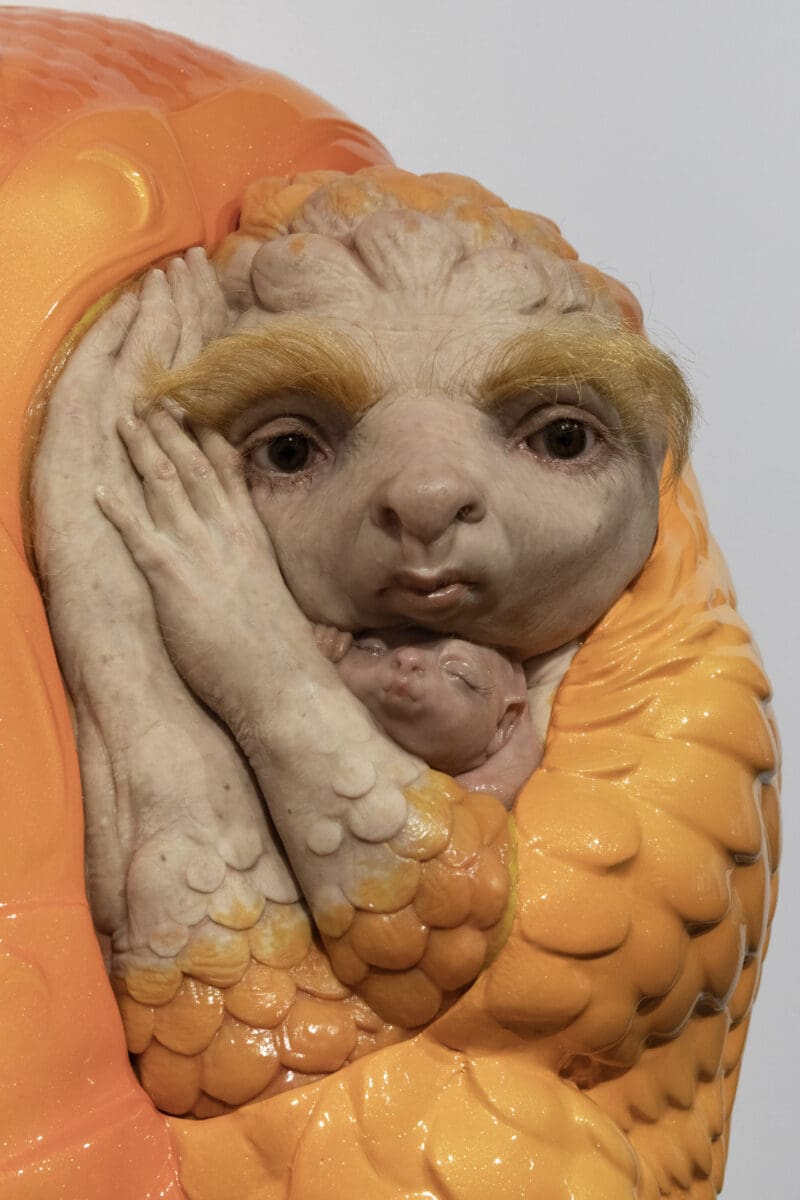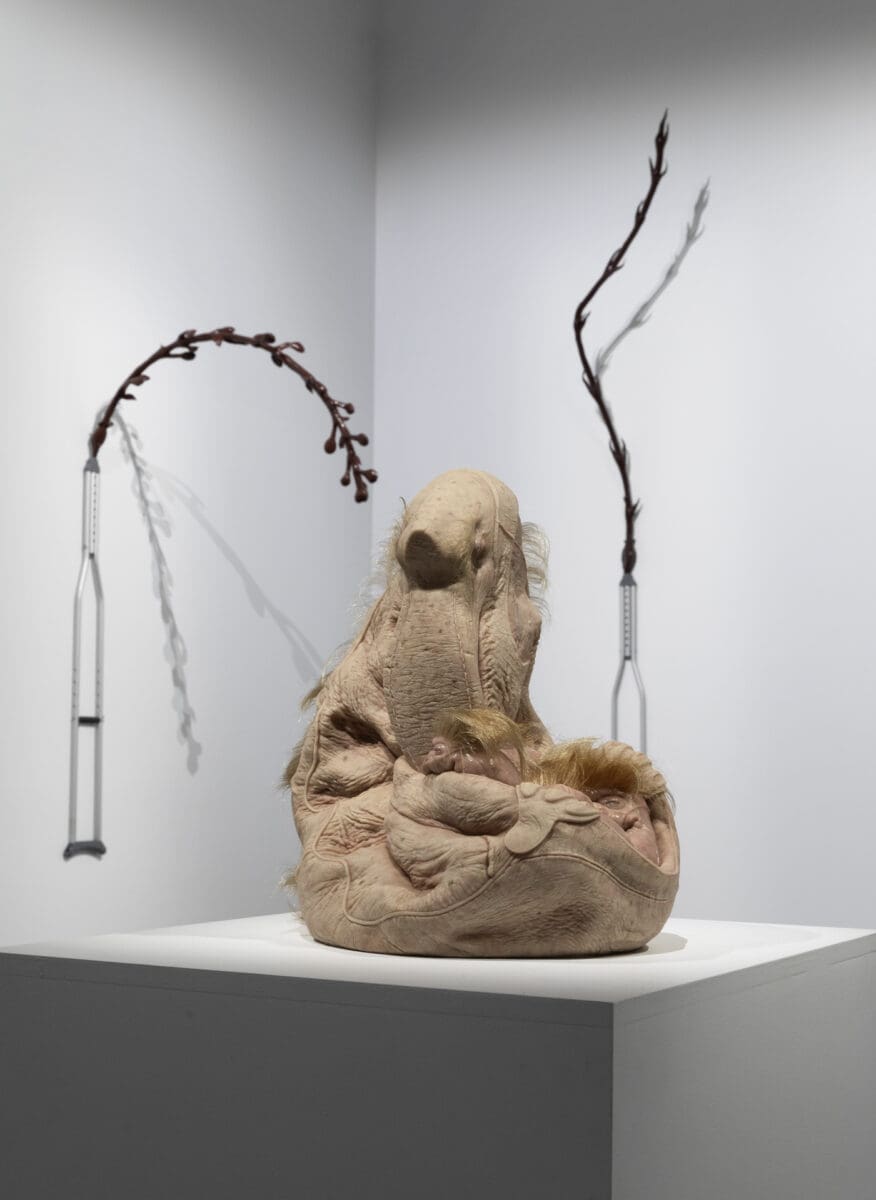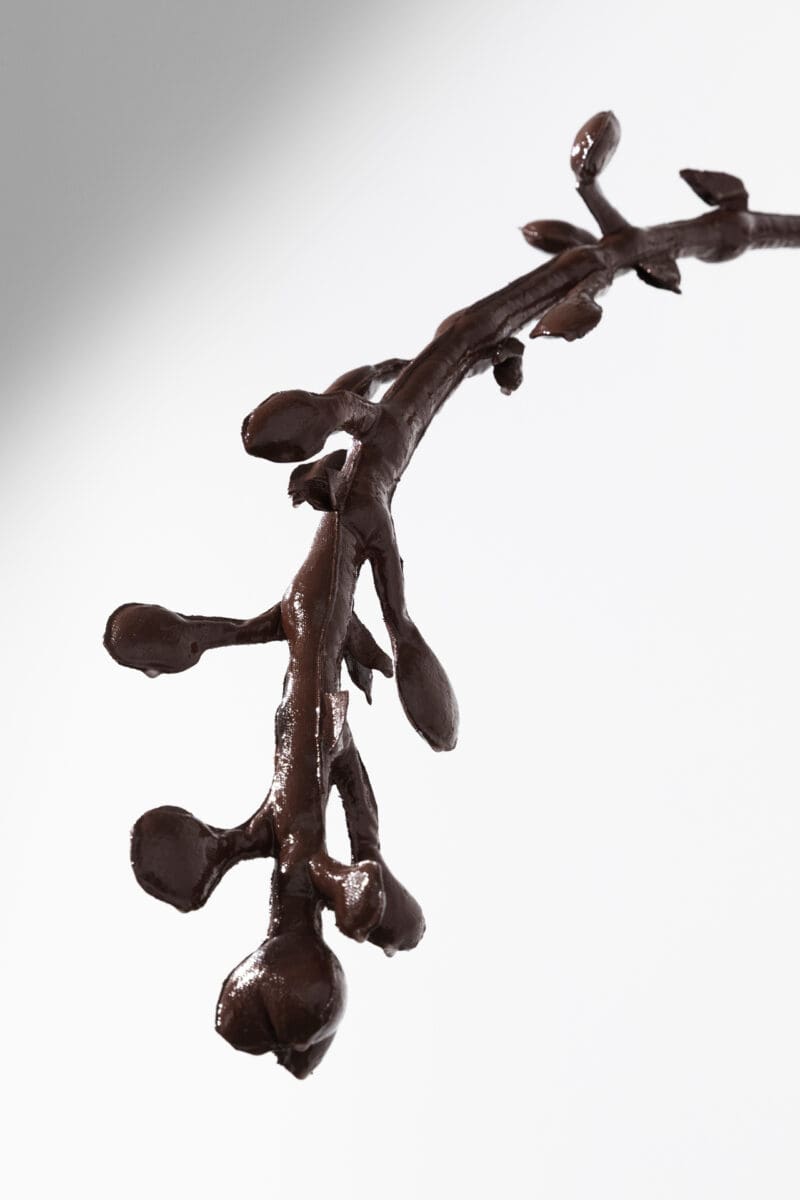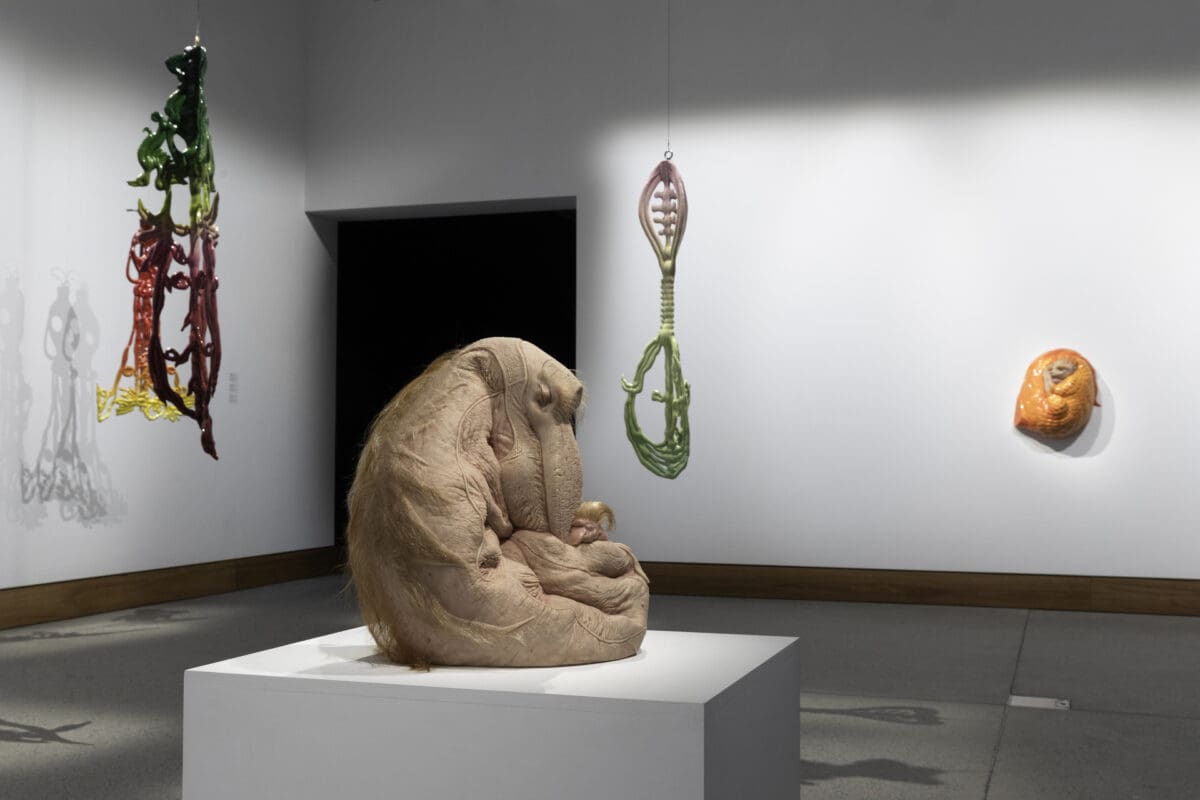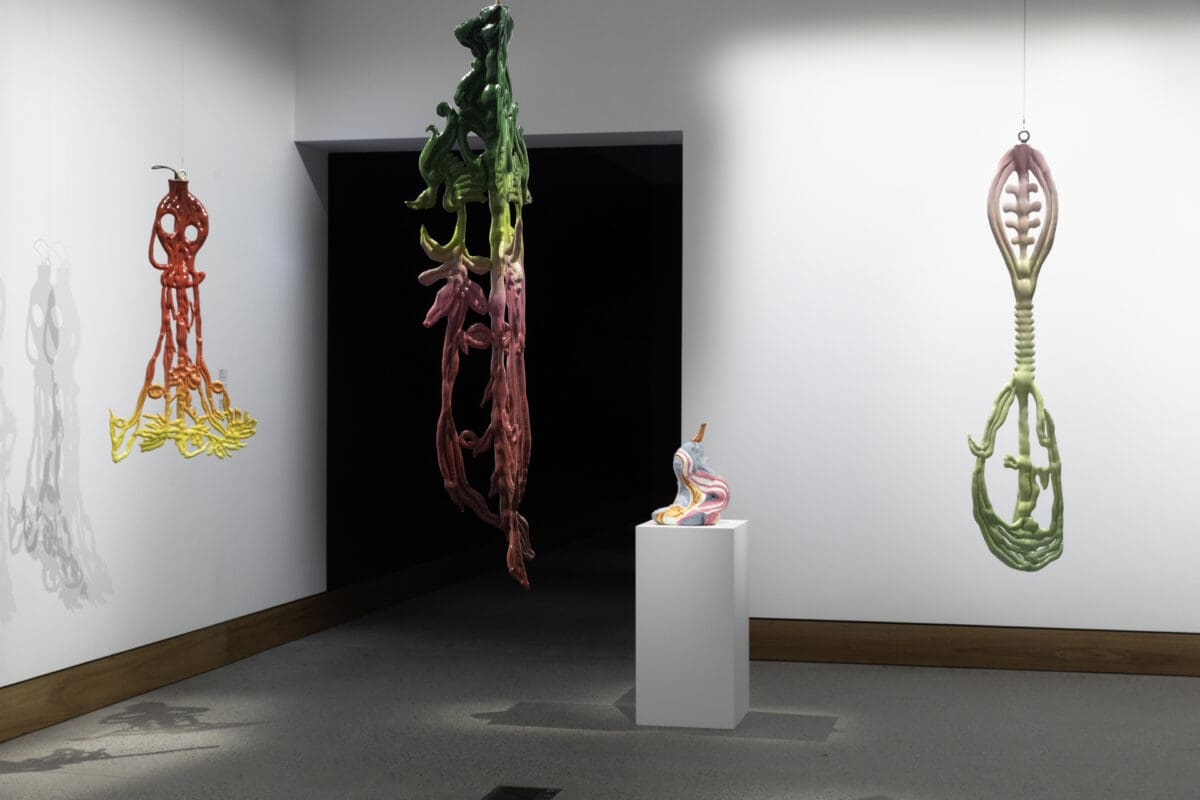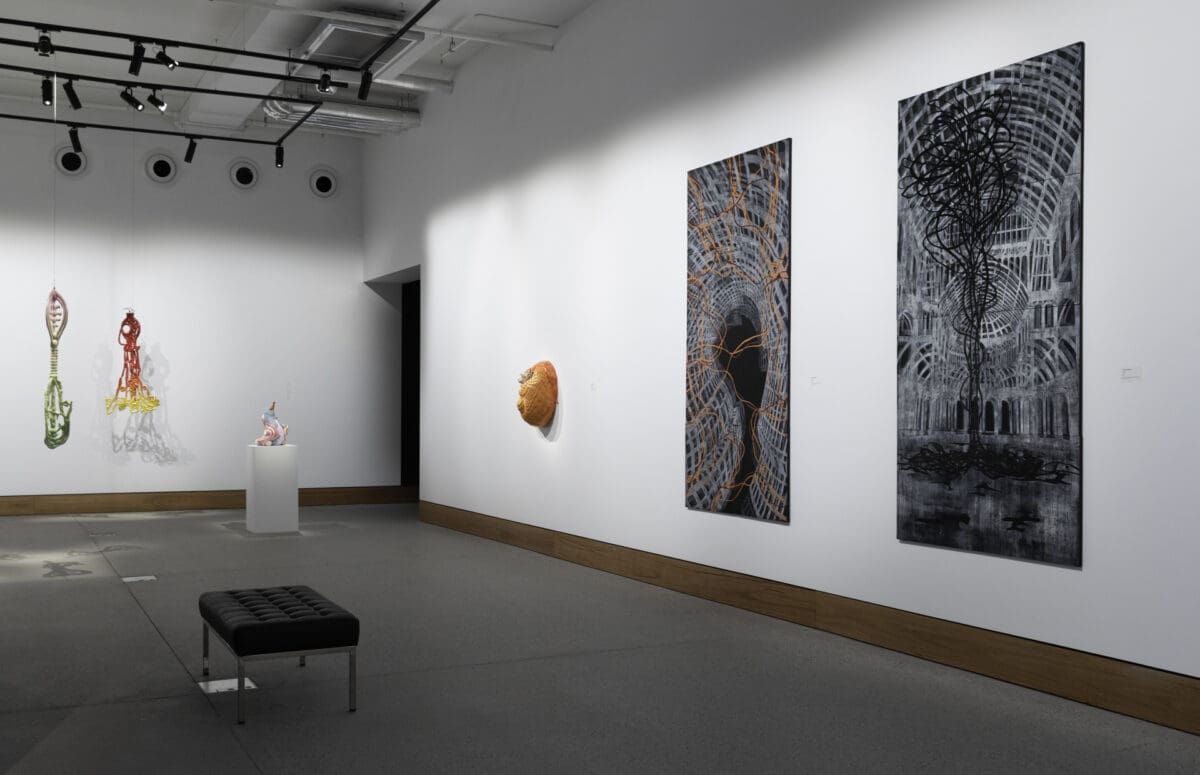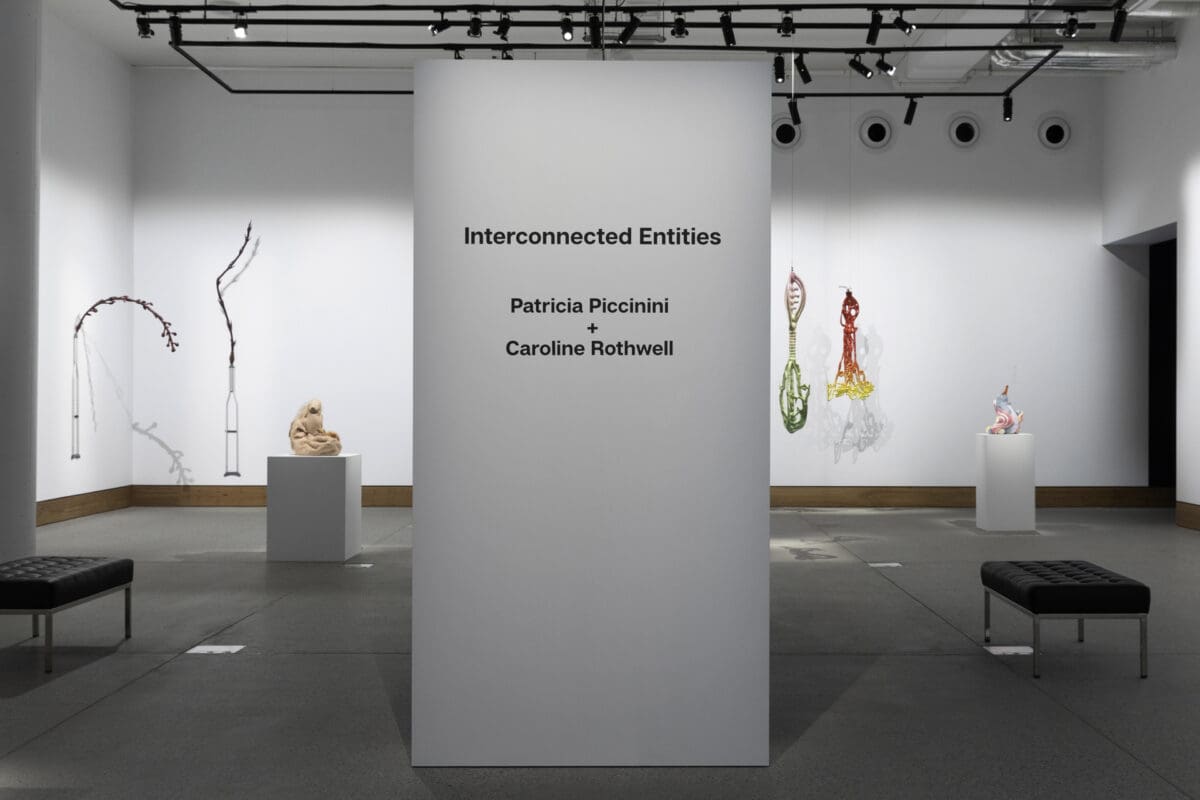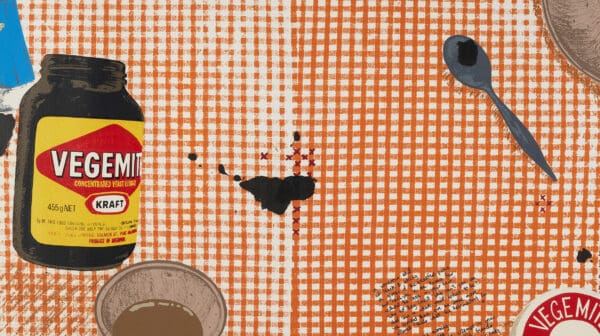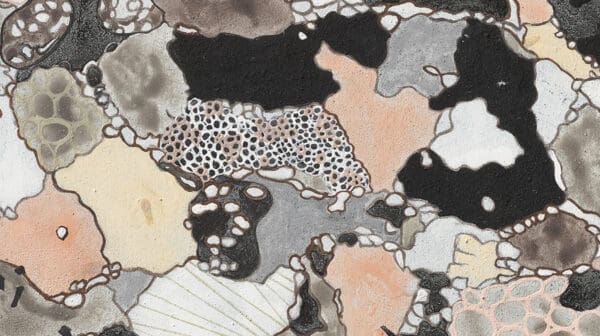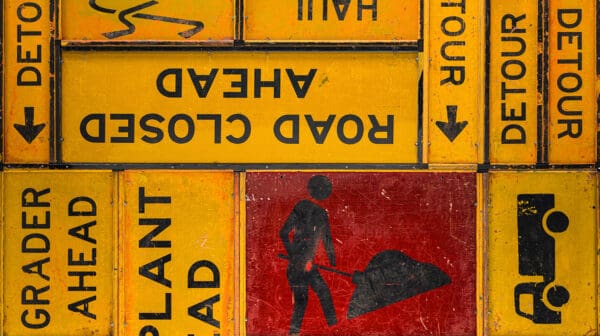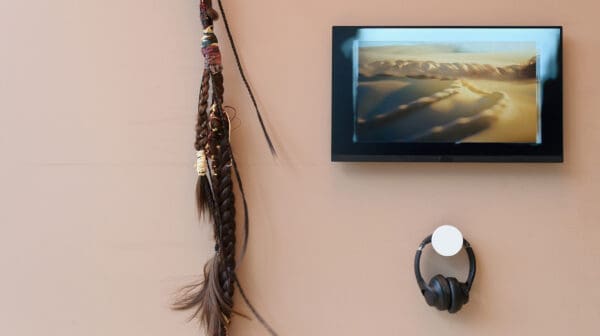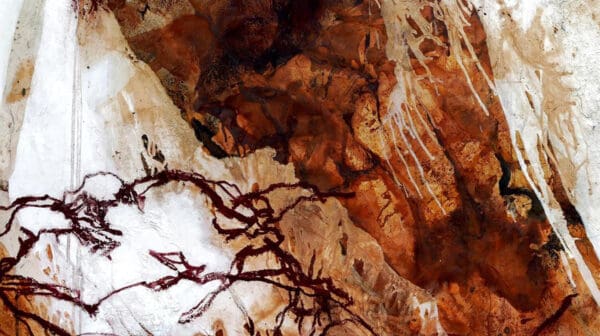At the City of Coffs Harbour’s Yarrila Arts and Museum (YAM), science meets speculation in the liminal space between nature and the human world. Interconnected Entities brings artists Patricia Piccinini and Caroline Rothwell into direct conversation for a dialogue of aesthetics, examining the critical environmental issues of our time. Poetic rendering of dreamscapes and the uncanny, intersecting with ecological ethics, encourage humans to connect more deeply with the natural world.
It’s an interesting conversation to have in Coffs Harbour, where the Great Dividing Range meets the Pacific Ocean. Nature is in abundance here. Conceptually, Interconnected Entities almost does the opposite, removing humans from the outdoors, and placing them within a sterile, white, climate-controlled environment. Its messages are amplified by the two other exhibitions on view: The interactive installation screen artwork, Flowers and People—A Whole Year per Hour by teamLab, featuring an ever-changing scene of flowers responding to the person standing in front of the screen, and Juz Kitson’s ceramics and new immersive video work, Shadows Make the Light Shine Brighter, presented within a reflective black gallery space, musing on metamorphosis, decay, and beauty.
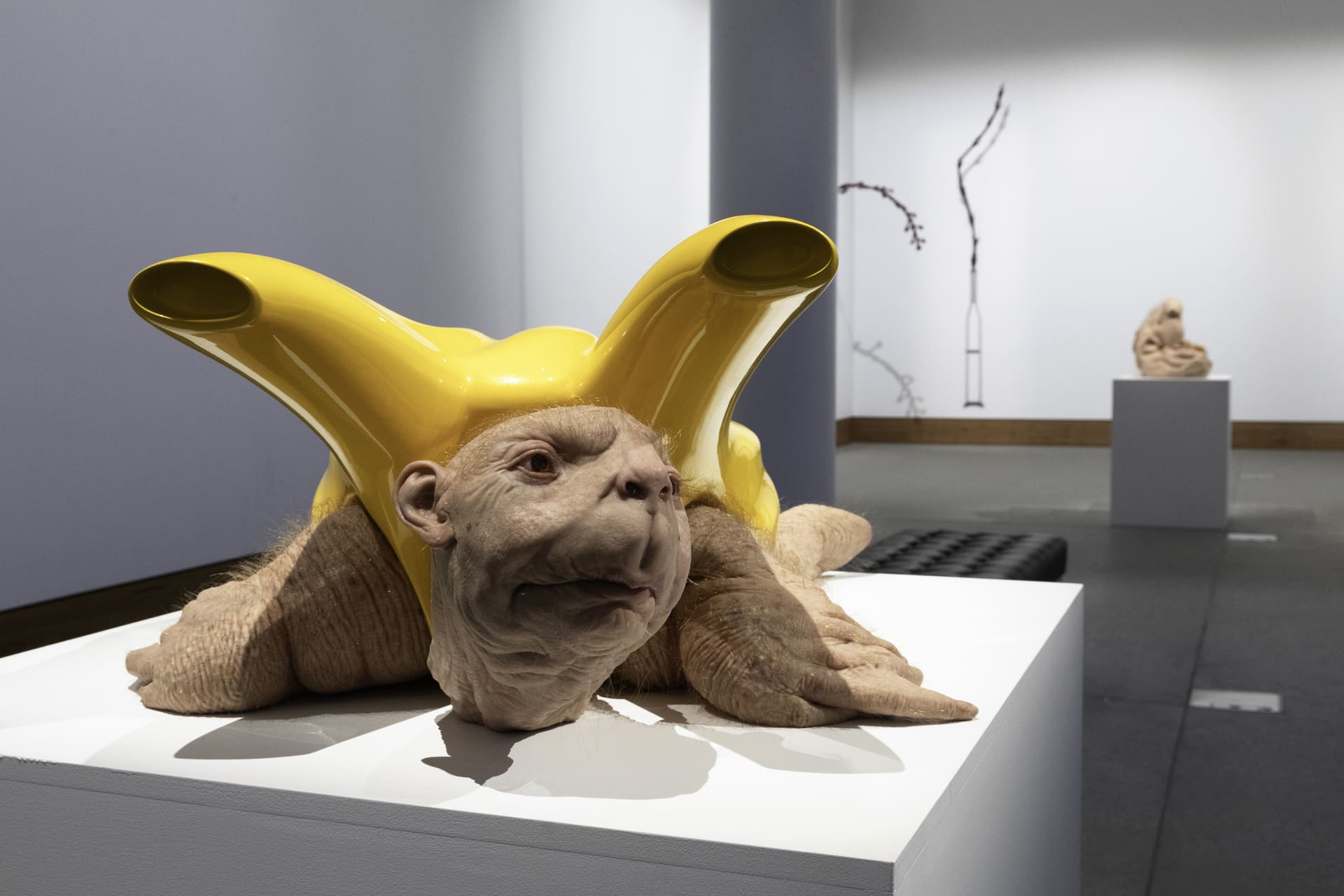
Relating to themes of human interaction with the environment, science, and technology, Interconnected Entities considers how art provokes a reshaping for the future. Piccinini’s and Rothwell’s artworks foster ethical imagination by asking viewers to reconsider what constitutes the human, and by association, our engagement beyond humanness. “[Piccinini and Rothwell] work across the shared themes of hybridity, transmutation, future technologies and biophilia,” says YAM’s museum and gallery service leader, Carrie Kibbler. “Their works speak to humanity’s kindred and complex relationships with the plant and animal worlds, and our inherent connection with these species and each other.”
All the works in Interconnected Entities explore these intersecting themes, incorporating bright colours and jarring aesthetics to disrupt initial readings of the works. From Piccinini’s silicone and hair hybrid chimaeras evoking ethical unease, ambiguity, and yet a sense of cuteness with their wide eyes and smooth skin, to Rothwell’s industrial materiality of canvas, gypsum cement, aluminium, paint, Hydrostone, and bio-resin, crafted into installations that blend eco-aesthetics and found objects. Both practices are based on extensive research into the materials and the liminal space between art and science.
In one acute example, Piccinini’s new generative video project, coinciding with whale season on the Coffs Coast, Baleen Choreography (2025), is inspired by her love for Humpback whales. A singing whale is surrounded by chimaeras for a choreographed ‘dance’. “The work aims to highlight how humans often have a relationship with nature that considers how we can save species from extinction, but demonstrates that animals are the species looking after our marine ecosystems,” says Kibbler.
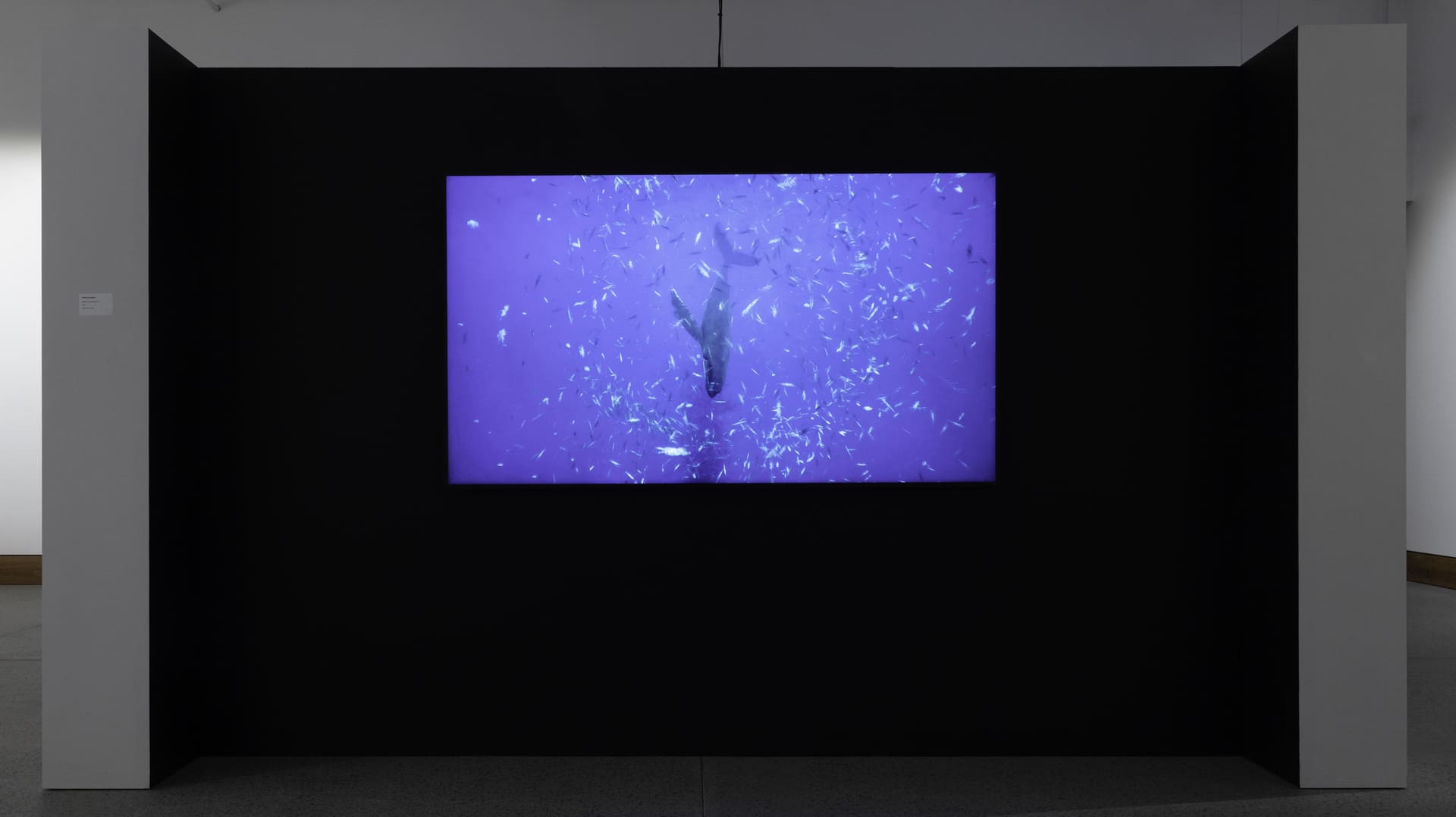
This theme continues in Cleaner (2019) by Piccinini, composed of a hybrid of fibreglass, automotive paint, silicone and human hair—a turtle-like creature with human qualities, which, fittingly for Coffs, features a yellow banana-like shell. The work addresses the plight of turtles and plastic pollution in the ocean. Part-turtle and part-vacuum, cleaning up the ocean as it goes. Piccinini has said that her works invite thinking about how greater systems interact with other entities, in order to imagine a better future.
Rothwell’s slowly spinning sculpture of the ornately composed Green George Clifford (2021), hung from the ceiling, reveals the artist’s philosophies of earth as a complex yet perfect operating system. It delicately engages with the air in the gallery, turning as the audience moves through, inviting the audience to consider environmental tipping points.
In an era of rapidly advancing biotechnological and ecological transformation, Interconnected Entities offers speculative artwork that transcends conventional boundaries. It provides a framework to think outside current understandings—using a varied material palette, bright colours, and, in a way, generating confusion about what’s real and what’s not. Perhaps, after viewing an exhibition like this and traversing the urban streets down to the ocean and beyond to the mountains, it can invite connection, and hopefully, inspire real change to protect the environment.
Interconnected Entities
Yarrila Arts and Museum
Until 24 August

